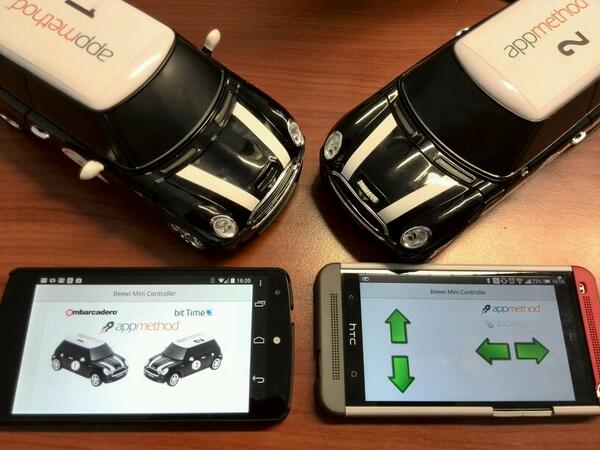Delphi for Linux is now available delivering support for Linux 64bit server-side and standalone applications for Ubuntu and RedHat Enterprise. Guys, I'm very enthusiastic about this new support! This is a very greats news for Delphi developers and not, everywhere!
By now Delphi can support and generate native code for several platforms (7 to be exact!!!): Linux (64bit), Windows (x86 and x64), OS X (32-bit ), iOS (32 and 64-bit) and Android.
I think that no citation may be more appropriate of this:
one codebase to rule them allBelow a list of the most interesting features available in this release (IMHO):
Delphi Linux Compiler
- 64-bit Linux platform support
- Delphi language support
- ARC-enabled
- 1-based strings
- LLVM engine based
Supported Linux Distributions
- Ubuntu Server (Ubuntu 16.04 LTS)
- RedHat Enterprise Linux (version 7)
RTL features supported
- Linux file system access
- Threading and Parallel Programming Libraries support
- Memory management
- HTTP and REST libraries support for HTTP calls
64-bit Linux for Server Applications
- FireDAC provides Linux support for all Linux-capable DBMS, with the only exception of Informix. See Database Connectivity.
- WebBroker, RAD Server (EMS), and DataSnap support for Multi-tier servers (standalone and Apache modules).
- DUnitX support.
- PAServer support.
- Indy-based client and server support.
FireMonkey
- New System Status Bar Options on iOS
- Two new properties have been added to TForm for changing the behavior of the system status bar on iOS: SystemStatusBar.BackgroundColor and SystemStatusBar.Visibility.
- Multi-Threading Support for TBitmap, TCanvas and TContext3D
- Unification of Delphi and Java threads on Android: CallInUIThread has been deprecated. All code is now running in the Java UI Thread, removing the need for thread synchronization
Improvements for Firebird
- New Direct property to add support for the Direct I/O backup feature.
Improvements for MySQL
- Support for MySQL v 5.7.
- Support for MariaDB v 5.5 or later. Use FireDAC's MySQL node to connect to MariaDB.
- Compatibilty with the recent MySQL versions 5.6.x and 5.7.x.
Database improvements
- VCL TDBImage direct support for JPEG and PNG graphic formats.
- Support for display options for BlobFields.
- Direct GUID access for TField classes.
RTL
- HTTP Client
- HTTP Client Library provides support for 64-bit Linux.
- Improved async support in HTTP client
- RTL support for 64-bit Linux
- RAD Studio 10.2 Tokyo provides Linux file system support using standard system functions, streams, and the IOUtils unit. It also provides Standard RTL Path Functions support for 64-bit Linux.
Improved C++ packages for mobile
RAD Studio 10.2 Tokyo links C++ packages for iOS and Android statically. Previous versions of RAD Studio generated a file with the .so extension for C++ packages, but were not actually dynamic libraries. RAD Studio 10.2 Tokyo generates C++ packages with the correct file extension (.a). If you statically link against a .so package, you may need to change to link against the new filename.RAD Server Multi-Tenancy Support
With Multi-Tenancy support, a single RAD Server instance with a single RAD Server database connection can support multiple isolated tenants. Each tenant has a unique set of RAD Server resources including Users, Groups, Installations, Edge Modules, and other data. All tenants have custom resources that are installed in the EMS Server. Also, as an administrator you can create new tenants, edit existing ones, add, edit, or delete details of your tenants, specify if the tenant is active, and delete the tenants that you do not need.iOS 10 Simulator, device, and macOS
Full support for iOS 10, including iOS 10 32-bit and 64-bit debugging on device, Simulator support (Delphi only) and macOS Sierra support.The news are not only these, for the complete list of all news of this release go here.



















